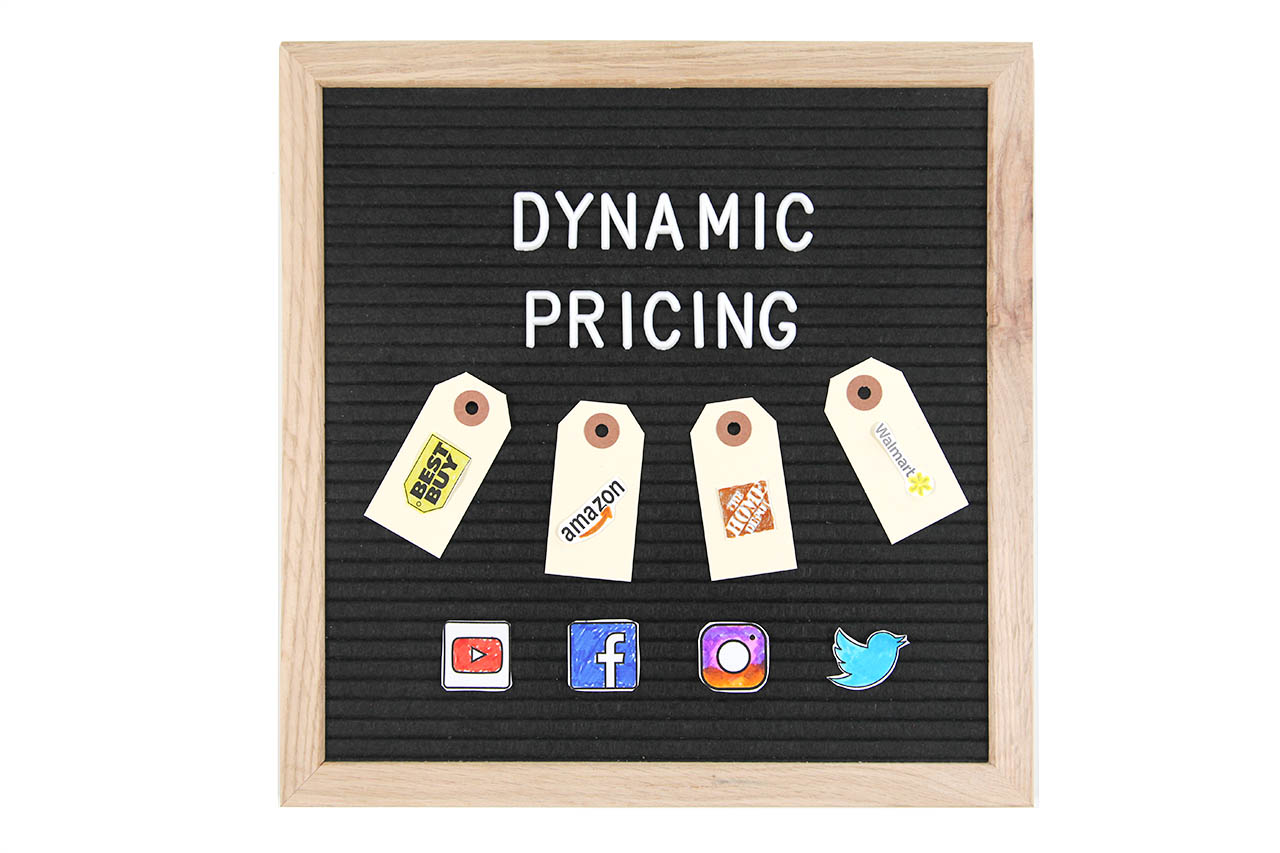This is how dynamic pricing gets you to panic pay or overspend on your purchase, every darn time.
I’m trying to buy my growing kid a new pair of shoes and I’m staring at my online shopping cart in disbelief. I like to plan ahead and budget my purchases, so I added a $27 pair of kid’s runners to my cart last week. Three days ago the price jumped to $35. Today the price is $24. It’s the same pair of shoes sold through the same retailer. What gives?

Getting duped by dynamic pricing
This selling strategy is called dynamic pricing. If you’ve ever bought a plane ticket online you’ve seen how fares can fluctuate based on competitor pricing and supply. Let your cart expire and that same flight could cost more because there may be fewer seats and more demand.
Over time we’ve accepted this algorithmic pricing in the travel and entertainment industries. But now we’re seeing dynamic pricing in retail too, where an item’s price can change dramatically in your cart just by browsing away. When retailers use algorithms to set prices, more may be going on than just supply and demand.
A study by Northeastern University in Boston found that several e-commerce sites, such as Home Depot and Walmart, manipulated prices based on the browsing history of customers. Those who shopped on a mobile browser were further disadvantaged because they were price-steered to more expensive products, paying more due to price discrimination.
Related: How social media and FOMO wire you to spend money
Since online retailers know a lot about you – your postal code, browsing history, credit card type, buying history, and devices – it’s possible your items are being priced based on your perceived ability to pay. If you live in a fancy neighbourhood, a pair of kid’s shoes could cost you $5 more than the online shoppers in a nearby postal code.
Imagine if retailers pulled this stunt in person? Your price for a dozen eggs and a loaf of bread could be decided by the quality of your coat.
The costs of buying the algorithm-selected choice can add up, especially on Amazon. A 2016 study by ProPublica found the average price difference between what Amazon recommended and the cheapest price was $7.88 for the 250 products they tested.
“An Amazon customer who bought all the products on our list from the buy box would have paid nearly 20 per cent more — or about $1,400 extra — than if they had bought the cheapest items being offered by other vendors,” says the study.

How to defeat dynamic pricing and pay less
Being manipulated and price-optimized so retailers can squeeze the maximum you’re willing (and able) to pay fails for my budget. Here’s how you can neutralize the online environment to get the best price:
1. Test for price changes
View an item online, and then view it again later. Did the price change? Now compare the retailer’s prices on your mobile device and computer. Retailers may offer a different price depending on your device or web browser. If the price changes, you’re dealing with dynamic pricing.
2. Browse Incognito Mode
By setting your browser to incognito or private mode, your shopping history won’t be stored on your computer. Retailers can still access your IP address to find your location, but they can’t change the price based on your viewing habits.
3. Disable third party cookies
Many websites save a special code in your browser called a cookie. Each cookie is unique, so the retailer can track your viewing habits across the internet. By disabling cookies on your browser, retailers are blocked from targeting you with advertisements and adjusting prices on items you’ve visited though these ads.
4. Enter a new postal code
Try a different address during the checkout process and see if your price changes. If the price decreases, clear your cookies, shop from a mobile device, or switch to another browser. Only make a purchase when you’ve verified the lower price in your virtual shopping cart.
5. Comparison shop
Compare prices between competing retailers. Knowing the value and price history of an item can protect you from being algorithmically gouged.
Always be sure to track your spending and know your budget. If you don’t need it and can avoid the purchase completely, you’ve beaten the machines – for now.
Love love love,
Kerry





Use a VPN.
I have to try the incognito mode and disabling the third party cookie shopping! Great tips!
Awareness of dynamic pricing is super important. Most people have no clue they are being manipulated… “Deals” on Black Friday puts thousands of people in debt each year for things they don’t even need. It’s a serious issue and needs to be addressed. Keep it up! 🙂
Free ‘Keepa’ browser extension shows graphically on the product page the price history for most Amazon products and will notify you via email when a product’s price goes below a target price you set with it.
Interesting Kerry. I’ve started using the Amazon app and see that some prices change. I figured this was due to exchange rates with the “real” price staying unchanged in US dollars.
I’ve also noticed that some items I’ve abandoned in my cart or added to my wishlist go on sale. I get notified of the Lightning Deals and buy then. I rarely need something right now
I am impressed. It should be unmasked as often as possible. Internet marketing has entered a very aggressive phase of development. I do not like it anymore. I did not get it once but now I know that it all leads to nowhere. Greetings.